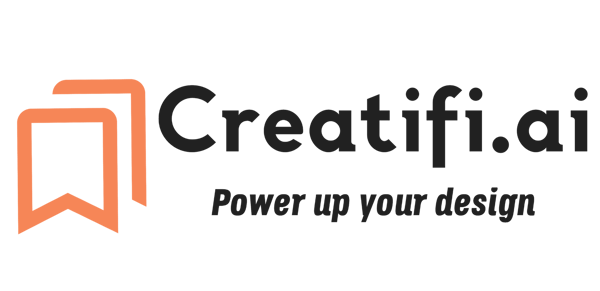Data Visualization for Market Researchers
Discover how data visualization enhances market research by transforming complex data into compelling narratives. Explore top tools like Tableau, Power BI, and Google Data Studio to effectively present your findings.


In the complex world of market research, the ability to present data in a clear, engaging, and actionable manner is as crucial as the data itself. Data visualization plays a pivotal role in this process, transforming rows of numbers into compelling narratives that can drive strategic decisions. This article explores the importance of data visualization in market research, reviews some of the best tools available, and offers tips for creating visuals that not only inform but also engage.
The Importance of Data Visualization in Presenting Findings
Data visualization is the graphical representation of information and data. By using visual elements like charts, graphs, and maps, data visualization tools provide an accessible way to see and understand trends, outliers, and patterns in data. In the context of market research, visualizations can help communicate findings efficiently, making complex data more digestible for stakeholders and clients. They enable researchers to tell stories with their data—stories that can influence decision-making, drive strategy, and spur innovation.
Review of the Best Data Visualization Tools
Several data visualization tools have become indispensable for market researchers looking to present their findings effectively. Here are a few recommended tools known for their robust features, user-friendly interfaces, and versatility:
Tableau: Widely regarded as one of the leading data visualization tools, Tableau offers powerful analytics capabilities. It allows users to create a wide range of interactive and shareable dashboards, making complex data more understandable at a glance.
Tableau offers different plans tailored to various user needs, including Tableau Creator, Explorer, and Viewer subscriptions. The cost structure is as follows:
Tableau Creator: Designed for those who create data visualizations, this plan costs around $70 per user per month when billed annually. It includes Tableau Desktop, Tableau Prep, and one Creator license for either Tableau Server or Tableau Online.
Tableau Explorer: Aimed at users who explore data saved in Tableau Server or Tableau Online, this plan is priced at approximately $42 per user per month (billed annually) for Tableau Online, and it requires a minimum number of licenses.
Tableau Viewer: For users who view and interact with dashboards and visualizations, the Viewer plan costs about $15 per user per month (billed annually) for Tableau Online, with a minimum purchase requirement.
Microsoft Power BI: Known for its deep integration with other Microsoft products, Power BI provides comprehensive analytics tools with an emphasis on usability and customization. Its real-time dashboard updates are particularly useful for market researchers needing up-to-the-minute data.
Power BI Desktop: Free version that offers data visualization and report generation capabilities.
Power BI Pro: Priced at $9.99 per user per month, this subscription includes data collaboration, publishing, and sharing features, suitable for business users.
Power BI Premium: Offers more advanced features, including dedicated cloud resources, and is priced based on capacity. The cost starts at $4,995 per capacity per month, targeting larger enterprises with extensive requirements.
Google Data Studio: This free tool from Google transforms your data into customizable informative reports and dashboards. A great option for those already using Google Analytics, it offers seamless integration and a user-friendly interface.
QlikView: Offering guided analytics, QlikView is designed for more in-depth data analysis, allowing users to explore data deeply and reveal insights that might not be immediately apparent. QlikView's pricing is not publicly listed and can vary based on the deployment size and specific customer needs. They offer a personalized quote based on your organization's requirements. Historically, QlikView has been known to offer both perpetual and subscription licensing options, with prices often negotiated on a case-by-case basis.
D3.js: For those with programming knowledge, D3.js is a JavaScript library that allows for highly customizable data visualizations. It's ideal for creating complex, interactive graphics that stand out from the crowd. It is open-source and free to use, making it a cost-effective option for those with the necessary programming skills to leverage its capabilities.
Tips for Creating Engaging and Informative Visualizations
Creating effective data visualizations requires more than just selecting the right tool; it involves understanding your audience, the story you want to tell, and the best way to convey it. Here are some tips to help you create visuals that engage and inform:
Know Your Audience: Tailor your visualizations to the knowledge level and interests of your audience. What is obvious to a data scientist might not be to a marketing executive.
Choose the Right Type of Visualization: Match the visualization type to the data story you want to tell. Use bar charts to compare quantities, line charts to show trends over time, and maps for geographical data.
Keep It Simple: Avoid cluttering your visuals with too much information. Focus on the key message you want to convey and eliminate anything that doesn't support that message.
Use Color Wisely: Colors can significantly impact the readability and impact of your visualizations. Use color to highlight important data points and ensure there is enough contrast to make the visualization accessible to everyone.
Annotate and Label Clearly: Ensure your charts and graphs are labeled clearly, and consider adding annotations to highlight key insights or trends. This can guide your audience through the data narrative more effectively.
Iterate and Get Feedback: Creating compelling visualizations is an iterative process. Share your visuals with colleagues, get feedback, and be prepared to make adjustments to improve clarity and impact.
Data visualization is a powerful storytelling tool in market research, turning data into actionable insights. By selecting the right tools and following best practices in visualization design, market researchers can significantly enhance the impact of their findings, driving informed decision-making across their organizations.
